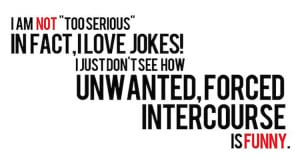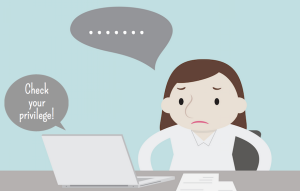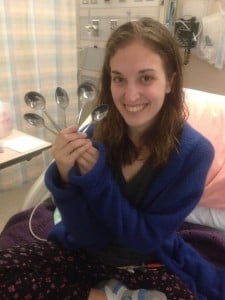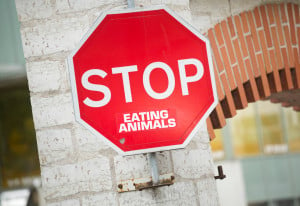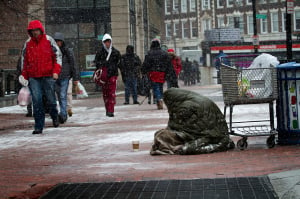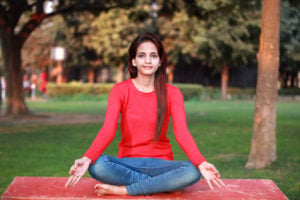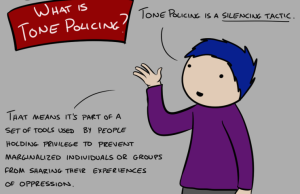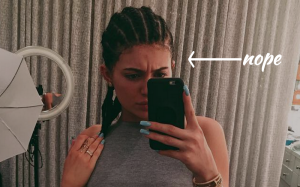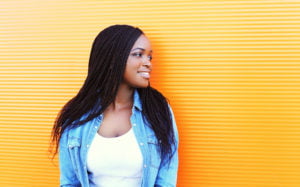
A young person turns their head to smile and look at something next to them. They stand against a bright orange background.
As with most queer people, being a teenager really wasn’t easy for me.
Before I truly “found” myself and came to terms with my sexuality, I felt so alone. I had to navigate heterosexism in my high school, the media and in my religious community. I was regularly devalued on the basis of my orientation.
Queer youth are a really vulnerable group. They’re more likely to attempt suicide. Statistically, they’re more likely to be bullied and abused than their straight counterparts. They’re particularly vulnerable to homelessness, alcohol and drug abuse, and mental health difficulties.
For this reason, it’s really imperative that we do better by queer teenagers. We need to learn to support them so that they receive the validation I – and many others – didn’t receive.
Let’s take a look at the following five truths and think about how we can better support the queer teenagers in our lives.
1. You Don’t Have to Simply Be Gay or Straight
I distinctly remember the first time I saw someone talking about how they knew they were queer. I was about eight years old, and I was watching Oprah one afternoon when she interviewed a gay man.
“I knew since I was five that I was gay,” he said. “I was born this way.” He said he had no doubt in his mind that he was gay, and that he never really felt attracted to women.
Years later, I’d recall this interview when I was questioning my own orientation. For me, coming to terms with my queerness was different to his experience. I didn’t know I was queer since a young age, and I had plenty of doubts. I was attracted to girls, but I was also attracted to boys. What was wrong with me? Was I gay or was I straight?
His story was true for him, but it was only one story. I needed to see more stories to understand that everyone’s experience of queerness was different. I needed to see stories that showed me that there were more than two orientations.
I first heard of bisexuality when I got to high school. Prior to this, I thought the only people who weren’t straight were gay. I viewed sexuality as a very black-and-white thing, and I wished someone told me that my orientation could be shades of gray or any colour of the rainbow.
But it’s about more than bisexuality. When I got to university, I became familiar with other orientations – like asexuality, pansexuality and demisexuality. I learnt that you can have a romantic orientation as well as a sexual orientation, and that you can be sexually attracted to people without feeling romantic attraction towards them.
Above all else, I discovered that sexuality can be complicated.
Learning about the intricacies of orientation was so empowering. It made me realize that it was okay to feel the way I felt. I’m so grateful for this knowledge, because nowadays my orientation changes regularly – something that could be traumatic for someone without my support system and knowledge of queerness.
If I had this vocabulary when I was younger, maybe I wouldn’t have felt so alone. Maybe I would have been able to articulate my feelings.
2. Your Age Doesn’t Invalidate Your Feelings
When you’re young, society treats you like a lot of your experiences and opinions are invalid.
When it comes to discovering your orientation, older people might invalidate your feelings based on your age. If you come out at a young age, people might say you’re just confused, you’re experimenting, or you’ll change your mind.
And it’s totally okay to be confused, to experiment, and to change your mind – but these things don’t invalidate your feelings.
Being young doesn’t mean you don’t know what you feel. I wish I knew that my age didn’t mean that my sexual and romantic feelings weren’t invalid.
3. Queer Women Need to Practice Safe Sex, Too
There’s a common idea – even within the queer community – that women don’t need to practice safe sex when sleeping with other women. This is something that I, as a queer teenager, believed.
I partially blame this on a cisheterosexist education system. The sex education I received focussed only on cisgender, heterosexual people. We barely discussed queer people, let alone queer people having sex.
The myth is cissexist. It’s based in the assumption that all women have vaginas – an idea that harms trans women as well as trans men and non-binary people who have vaginas.
It also ignores the fact that STIs can be transmitted through oral and manual sex, too – no matter what orientation the participants are. For this reason, it’s really important that everyone knows how to practice safe sex. Using dental dams, finger cots, and condoms with sex toys can reduce the risk of contracting STIs.
The fact that nobody told me about safe sex between women not only meant that I was more vulnerable to contracting STIs. It also meant that I felt like I wasn’t important enough to be taught how to protect myself.
Growing up, I was constantly told that we were given sex education for our own good. So why weren’t queer kids given sex education that applied to the situations we could find ourselves in? Were we not valued enough?
Until we commit to fully-inclusive sex education, that’s the message we send to queer kids.
4. You Don’t Have to ‘Come Out’ in a Flashy Way
Queer communities tend to glorify the idea of “coming out.”
While coming out can be a beautiful and lovely experience for many queer people, not all experiences are good. Being able to come out and still feel safe is a privilege: coming out is so much easier when you’re financially independent, educated, older, cisgender, and fully abled. Sometimes, coming out can be messy. It can be complicated. It can be dangerous.
But I never heard about these stories when I was in my early teens. I only heard pleasant coming out stories, perhaps because the unpleasant stories are too painful to discuss.
As a result of this, I felt a lot of pressure to come out to everyone in a flashy way – through a coming out party, via a message written on a cake, or with a YouTube video. The thought of coming out so publicly scared me. If I weren’t that scared, maybe I would have come out when I was comfortable to do so.
So I wish someone told me that I didn’t have to “come out” in a flashy way. That I didn’t have to come out at all. That being in the closet didn’t make me dishonest, and it certainly didn’t make me any less queer.
5. Your Queerness Is Beautiful
Being queer in these times can be damn terrifying: despite the recent advances in queer rights, events like Orlando remind us that we’re simply not safe in this world. But our queerness is also beautiful.
It’s taken a while for me to become confident about my queerness, but it’s honestly something I’ve learnt to love over time.
My queerness is the one of the most beautiful parts of me. I want every queer teenager to know that their queerness is a beautiful part of them, too.
I’m so lucky that I’ve found a community of radical, inclusive queers – a community that affirms the beauty of queerness and the validity of my identity.
But I shouldn’t have had to wait until I was in my early twenties to find this community. I should have had that validation from the very beginning because that’s what I deserved.
That’s what every queer teenager deserves.
[do_widget id=’text-101′]
Sian Ferguson is a Contributing Writer at Everyday Feminism and a queer, polyamorous, South African feminist who is currently studying towards a Bachelor of Arts majoring in English and Anthropology. Originally from Cape Town, she now studies at Rhodes University in Grahamstown, where she works as vice-chair of the Gender Action Project. She has been featured as a guest writer on websites such as Women24 and Foxy Box, while also writing for her personal blog. Follow her on Twitter @sianfergs. Read her articles here.
Search our 3000+ articles!
Read our articles about:
Our online racial justice training
Used by hundreds of universities, non-profits, and businesses.
Click to learn more





